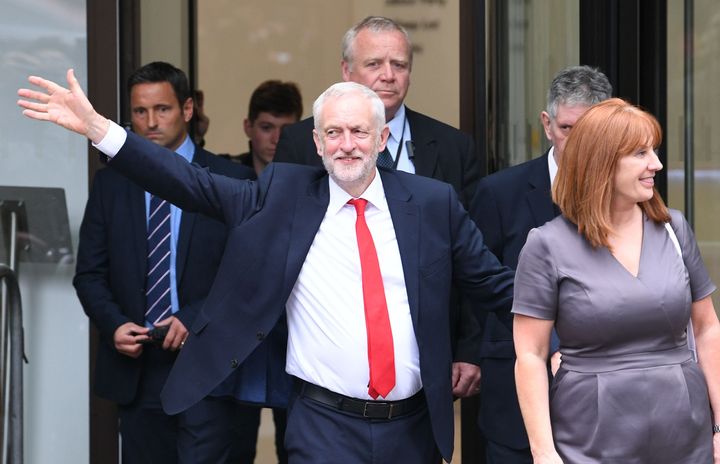
When the shock news came through, Jeremy Corbyn displayed a characteristic, chilled-out calm. Watching the BBC News on TV at his home in Islington, north London, the Labour leader heard the “Bong!” of Big Ben strike 10 o’clock and saw the banner headline: ‘Conservatives Largest Party’.
After a brief pause, the realisation dawned that Theresa May had lost her House of Commons majority. The 2017 general election had delivered a huge upset, Labour had actually increased its number of seats at Westminster. Corbyn gently smiled, then gave a slight nod of his head. “Jeremy doesn’t do fist-pumping,” one staffer said.
Sitting in on the sofa with his wife Laura and key aides Seumas Milne and Karie Murphy and others, Corbyn simply sipped tea to keep him going into the early hours. The results began with a trickle, then a flood, of seats showing Labour’s “surge” was real.
Corbyn - who once Tweeted “A gentle message to Trump: drinking tea together is far better than building walls to keep us apart” – also matched Trump’s talent for causing political upsets, as Labour began to take seats across the country from the Conservatives.
Back at Labour HQ in Victoria, the atmosphere was similarly calm and businesslike high up on the eighth floor of the party’s office block home. Field operations chiefs, manifesto architect Andrew Fisher, media and data teams were all glued to computer screens, crunching the numbers from across the nation.
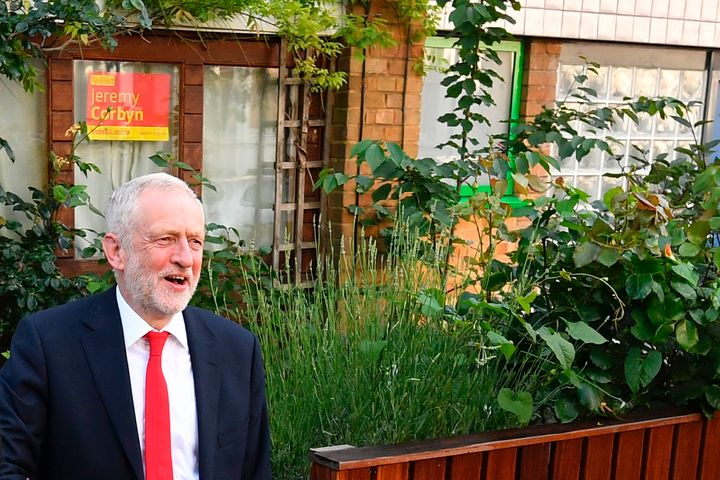
A jubilant “Yesss!” greeted the exit poll’s projection of a hung Parliament, and subsequent intelligence from the party’s network of teams on the ground confirmed it was no fluke.
Some leaders’ office staff went on to celebrate with trade unionists at the big Unite party at the International Transport Federation HQ in Borough Market, south London. Len McCluskey, a major Corbyn backer whose union donated the bulk of the election funds, was jubilant.
Over at Labour’s HQ in Victoria, the eighth floor open plan office was staffed by party general secretary Iain McNicol and elections director Patrick Henegan as well as the leader’s top team. To reflect the working atmosphere, it was an alcohol-free zone. Pizza was, however, supplied through the night. “We’re having pizza and having elections every year, we really are turning into Italy,” joked one staffer.
But down on the second floor of Labour’s ‘Southside’, the atmosphere was more like a traditionally boisterous election night party, and alcohol was very much allowed. Bottles of free wine and cans of craft beer - aptly titled ‘Trade Union’ Pale Ale – were cracked open.
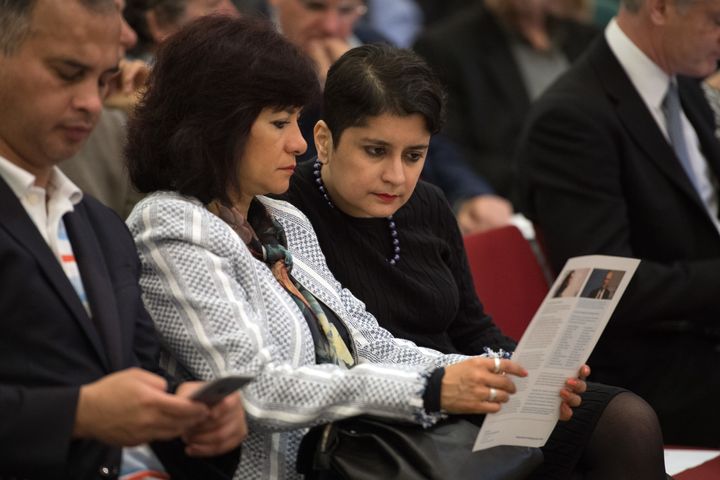
Comedian Mark Steele had turned up, and avid Corbyn supporters watched the TV screens as the big red bar charts mapped the swing to Labour. Whoops and hollers rang out with each fallen Tory seat. When Shadow Attorney General Shami Chakrabarti arrived after a stint in the TV studios, she was greeted like a hero, with a chant of “We love you Shami, we do”.
The first real hint of a good night was North Swindon, which showed the party’s vote had soared. “We knew then we were matching and in some cases exceeding the exit poll,” one insider said. Then Canterbury, the picturesque, true-blue Tory seat in Kent, fell to Labour for the first time in its history, largely thanks to a huge student turnout. That was swiftly followed by Portsmouth South, a traditional working class Tory constituency.
As the results came in thick and fast in the middle of the night, each triumph was cheered, but especially those victories for those close to Corbyn. Cat Smith, his former aide, won a loud whoop as she turned a tight marginal into a safe seat. But not all Labour MPs had the same treatment. John Woodcock, who had publicly said he would never want Corbyn to be Prime Minister, received boos as he appeared on screen, another tight marginal with an increased majority. A win for Birmingham Yardley’s Jess Phillips, another long-time critic, was met with shrugs rather than cheers.
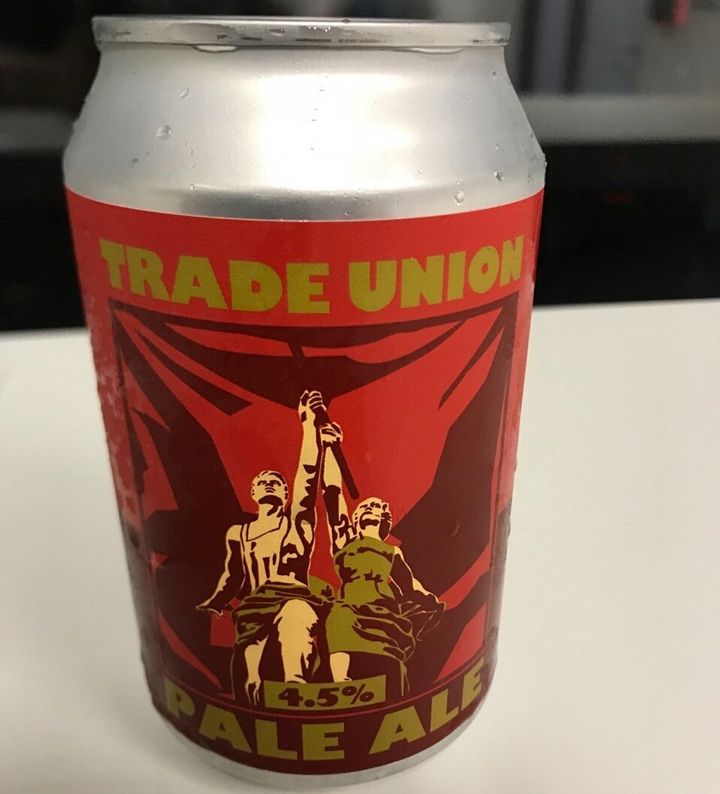
Corbyn’s staff told HuffPost UK that they had first felt the campaign shifted after May’s manifesto U-turn on social care. Internal polling showed for the first time that the big Tory lead among over-65s had shrunk markedly since the disastrous Tory policy was announced. At the same time, UKIP and ‘Labour Leave’ voters from the EU referendum last year were coming back to the party, attracted by the clear manifesto pledge to impose tax hikes on the richest, and on big business.
The mass rallies, much derided as naïve by ‘centrist MPs, had brought their own energy too. Momentum activists, dismissed as ‘clicktivists’ turned out and knocked on doors before and after many events. But it was when Corbyn attracted a 20,000-strong crowd at Tranmere Rovers football ground that his aides felt something really had cut through to voters. The first chant of ‘Jeremy Corbyn’, to the tune of the White Stripes’ Seven Nation Army, had emerged organically from the crowd. After thousands of shares on social media, it turned into his anthem.
The Corbyn team said that they fought the better-funded Tory machine with more effective online techniques. His Birmingham rally was screened live on Labour’s Facebook channel and received 1.5m viewers, one insider said. “That’s the same as ITV’s leaders’ debate.” “We didn’t have a Jim Messina [Obama’s online guru hired by the Tories] or a Lynton Crosby. We didn’t have outsider ‘gurus’ giving Jeremy media briefing for his debates.”
But whereas the Conservatives spent a small fortune on their targeted attack ads, Labour used Twitter and Facebook to mobilise their supporters. It was all about motivating their own vote rather than attacking the other side.
Another success was in registration of huge numbers of young voters. And although students had a term-time, big impact in places like Cambridge and Coventry (one ward alone saw a stunning increase in the vote, thanks to Warwick University students), many were also registered at their parental home. This boosted small town turnout and created a conversation with their families that spread the word on Labour. “That was a stroke of genius,” one staffer said.
On the other side of London, Corbyn was still at home. After three hours of results, he got a tip off that his own personal result for Islington North was showing record numbers. On a 73% turnout he had won a massive 40,000 votes – and a majority of 30,000. He was visibly touched. “That’ll be my fifth consecutive rise in the vote,” he said. “I owe everything to my Islington supporters.”
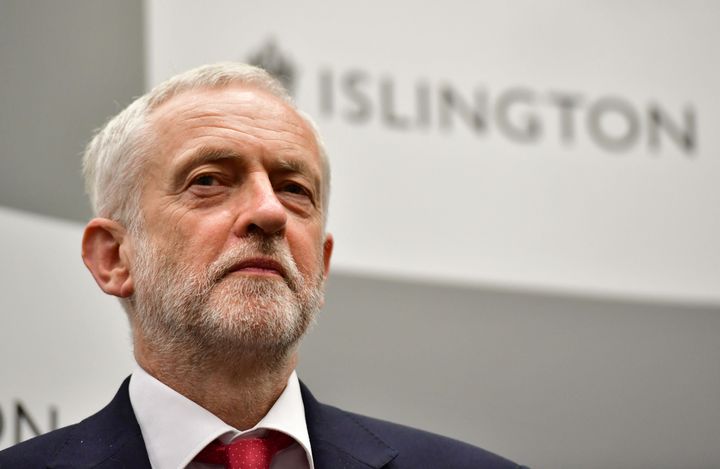
The Labour leader decided he wanted to get down quickly to the nearby Sobell Leisure Centre, where the result would be announced. He scribbled down in one of his trusty notebooks his speech to greet the momentous news. Braving the battery of waiting TV cameras camped outside his small home, Corbyn left to make his speech. “We changed the face of British politics,” he said, to cheers.
After a short drive back home, he snatched a brief nap, before later heading to Labour’s headquarters for 7.45am. A gaggle of supporters lined the entrance for his arrival. It had been a long night, but he looked fresher than most around him.
Yet it was later in afternoon, away from the media scrum, that Corbyn enjoyed his nicest moment of the entire day. Walking through the huge Andover Estate to make his regular Friday trip to his constituency office, he was followed by jubilant children and youths on mopeds.
A small group of black primary school children ran up and shouted “Vote Labour!” Jeremy Corbyn smiled his broadest smile of a happy 24 hours.
